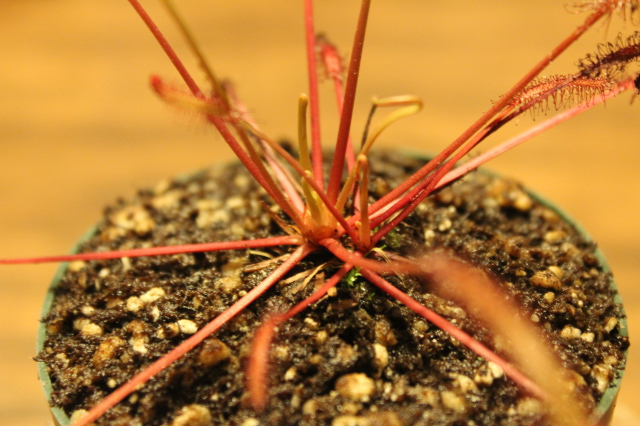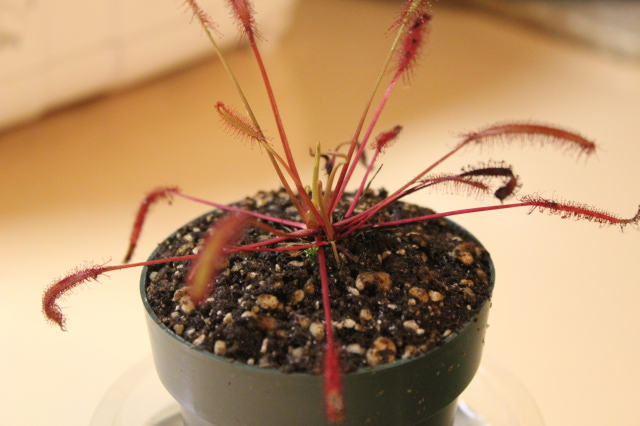Question
 Capensis #1
Capensis #1  Capensis #2
Capensis #2
I also had a question about the capensis I received. This one has confused me. I ordered 2 Drosera spatulatas (which are doing great) along with the capensis, and have grown them all together under the same conditions. I've constantly kept them all in about 2 inches of water, have put them in the best window for several hours of direct and indirect sunlight, and have certainly not kept them in undesirable temperatures.
I've noticed that some of the leaves have turned dark, almost black (in the 2nd photo, the leaf on the right is unmistakable, then there is one in the middle toward the back that you may or may not be able to notice, & the leaf hanging over the edge on the left...the underside is black). What has caused them to turn so dark? Do I leave them as they are? Do I cut them off?
Then just yesterday I noticed that there is a 2nd plant growing right next to the original, which is what I was focusing on in the 1st picture. What accounts for this and does it mean anything?
I realize I've only had this plant for a week, but again, I'm confused as to why it appears as if it's, well, dying, but then there can be a completely new companion plant. I must be doing something right, but the visuals just aren't matching up to me.
Thanks Again!
AnswerHi Jake,
Your plants look perfectly normal. Cape sundews normally cycle through leaves with the bottom ones dying as new ones grow from the center. We trim the plants before shipping, so you don't see all the dead one, but it's normal to see an older plant with a skirt of dead leaves.
The second plant growing in the pot is a new shoot coming up from the roots. Cape sundews do this all the time. Also, we propagate them from root cuttings, so this may have just been a second plant that formed on the same root piece. They are very prolific both from seed and cuttings.
Good Growing!
Jeff Dallas
Sarracenia Northwest
http://www.growcarnivorousplants.com







